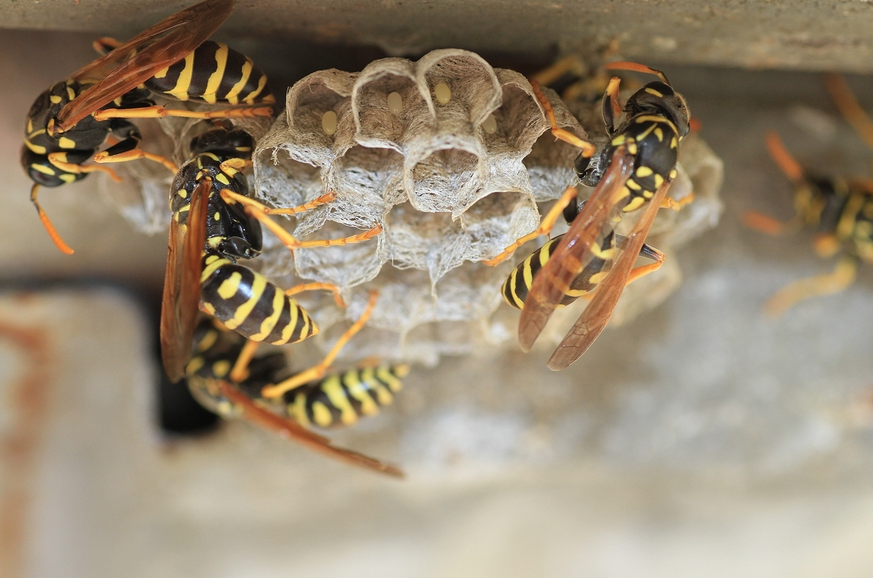Wasps are a familiar sight in many Australian backyards, especially during the warmer months. While most people associate them with painful stings and aggressive behaviour, there’s more to these insects than meets the eye. Understanding why wasps sting suddenly and how their instincts work can help you avoid risky encounters. More importantly, it highlights when to seek wasp nest removal services in Melbourne to keep your home safe and comfortable. In this blog, we’ll explore the science behind wasp aggression, how to interpret their behaviour, and what steps you can take to reduce your chances of being stung.
The Natural Instinct Behind the Sting
Wasps don’t sting out of malice; they sting because they feel threatened. Unlike bees, wasps are capable of stinging multiple times. This makes them more likely to attack if provoked or if their nest is disturbed.
Their defensive behaviour is rooted in survival. Social wasp species, such as yellow jackets and European wasps, live in colonies that depend on the queen for reproduction. The colony members instinctively protect the nest. Even a slight vibration; from footsteps, lawn mowers, or tapping on a wall; can trigger an alarm response. Wasps release pheromones when they sting, which alerts others in the colony to swarm and defend.
For humans, this can feel like being attacked without warning, but in reality, wasps were signalling their distress all along. Unfortunately, these signals aren’t always obvious to us.
Body Language: How Wasps Warn Before Stinging
Wasps use subtle body movements and flight patterns to communicate discomfort before stinging. By recognising these signs, you can back away before things escalate.
Some warning behaviours include:
- Hovering directly in front of your face or body
Wasps tend to check out potential threats closely. If one hovers in place while staring at you, it’s assessing the risk. - Sudden, jerky flight patterns
This often signals distress and an increased likelihood of an attack. - Raised abdomen or fluttering wings
This is a posture of aggression, the insect is preparing to sting. - Increased buzzing or swarming
If more wasps appear out of nowhere, it’s best to move away immediately.
These behavioural cues are worth noting, especially when you’re in the garden, near outdoor bins, or handling wood piles; all common nesting zones.
Nest Proximity: The Trigger for Unpredictable Attacks
Wasps are usually more aggressive the closer you get to their nest. This is because they interpret proximity as a direct threat to the colony.
Nests can be found in:
- Roof eaves
- Wall cavities
- Compost bins
- Tree hollows
- Sheds and garages
Most of these nests are well-hidden, so people may approach unknowingly and trigger an attack. Some wasps, like the yellow jacket, build nests underground, which makes them even harder to detect until it’s too late.
Accidentally mowing over an underground nest or knocking a hidden structure while gardening can quickly result in multiple stings.
That’s why identifying and removing wasp nests early is critical; and often best left to professionals offering wasp removal in Melbourne to avoid injury.
Seasonal Behaviour: Why Wasps Are Worse in Summer
Wasp activity in Australia typically peaks in late summer and early autumn. This is when colonies are at their largest and food sources become scarcer.
During this time:
- Wasps become more aggressive due to increased competition for food.
- They are more likely to venture near humans, attracted by sugary drinks, food scraps, and rubbish bins.
- Colonies become unstable as reproductive males leave and new queens emerge.
This heightened activity leads to more stings, especially during outdoor picnics or family BBQs. People often swat at wasps instinctively, but this only escalates the threat.
Knowing the seasonal risks can help you prepare ahead of time, such as sealing rubbish bins, covering food outdoors, and inspecting your property regularly for nests.
What to Do If You’re Approached by a Wasp
The worst thing you can do is panic. Swatting, screaming, or running suddenly can make you appear more threatening to the wasp.
Instead:
- Stay calm and still often the wasp is simply investigating and will fly away.
- Slowly move away without flailing arms.
- Don’t crush a wasp, doing so releases alarm pheromones that invite more attacks.
- If stung, leave the area immediately to prevent more stings from others nearby.
Being calm under pressure can greatly reduce the risk of multiple stings. Keep antihistamines or sting-relief gels on hand during peak wasp seasons if you’re prone to allergic reactions.
Why Professional Help Is Safer Than DIY Nest Removal
While there are DIY traps and sprays available, removing a wasp nest is risky and best handled by professionals. Nests can be larger and more complex than they appear, especially those hidden inside walls or underground.
Professional technicians:
- Wear protective gear to avoid stings
- Use species-specific treatments to ensure full colony removal
- Understand nesting habits and safe extraction methods
- Provide advice to prevent future infestations
Attempting to remove a nest without training can provoke an entire colony. If you’ve spotted a nest or suspect one nearby, consider contacting experienced pest control specialists for a safe, thorough removal process.
Understanding wasp behaviour is more than just curiosity; it’s a vital step in keeping yourself, your family, and your property safe from surprise stings. By learning what triggers a wasp and how they communicate distress, you can avoid risky situations and know when to take action. If you think there’s a nest nearby or want peace of mind heading into the warmer months, reach out to the team at Wasps Control Melbourne for expert wasp removal in Berwick, Camberwell, Glen Waverley, Kensington, Parkville, South Yarra, and surrounding areas. For professional inspections and safe removal, call 03 9021 3738 today.




